Only 90 kilometers north of Thailand’s capital Bangkok is the sunken Kingdom Ayutthaya where you immerse in the country’s glorious past before visiting the Monkey Temple of Lopburi.

Many foreigners visit this enchanted place packed with an incredible number of ancient ruins from the times when the city was Siam’s proud capital on a day trip. However, I recommend spending at least two days to really take the ancient glory in – and to include a half-day trip to Lop Buri.
AYUTTHAYA
A Glorious Past
The city of Ayutthaya is also the capital of the province of Ayutthaya. Being a capital is not a new thing since the city was already the capital of the Siamese Kingdom of Ayutthaya since 1351 when after an early establishment by the Khmer, Prince U Thong expanded the city. He had fled Lop Buri from a chickenpox epidemic.
Ayutthaya was already a serious power at the beginning of the 15th century. The imperium lasted for more than 400 years. A total of 35 kings ruled more or less large areas of Siam and continuously expanded the capital. In the 18th century, it was the most important metropolis on the Southeast Asian mainland altogether.
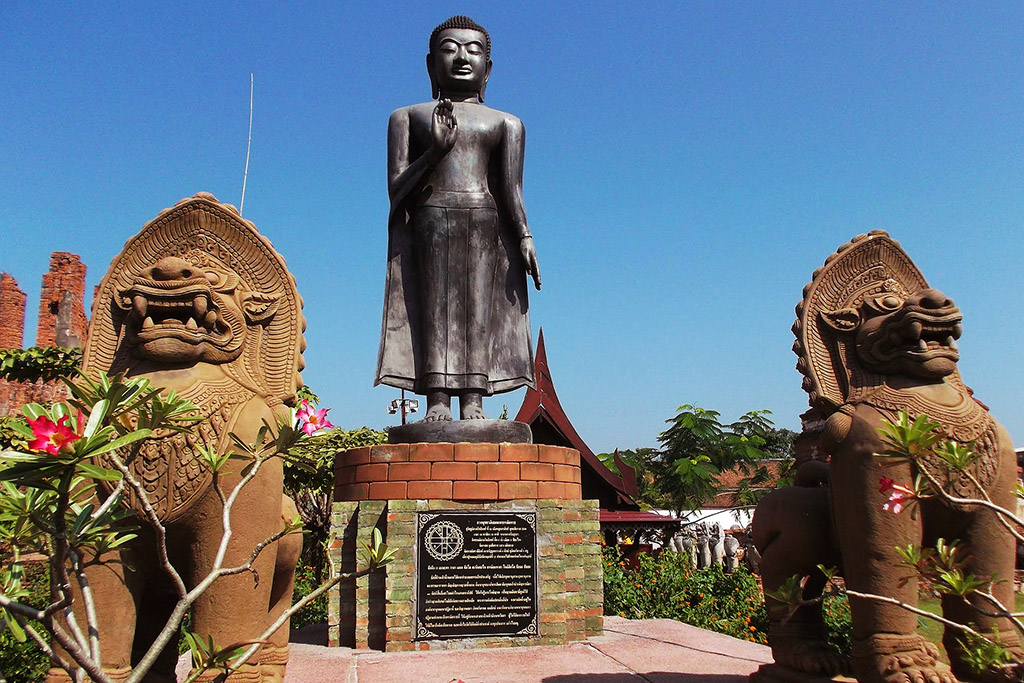
European merchants have also come to the city since the 16th century and report enthusiastically about the splendor of the city’s architecture. In its heyday, Ayutthaya was a cosmopolitan city with three royal palaces, 375 temples, and 94 city gates. Not less than 29 defensive forts protected the imperium. The French, Portuguese, British, Dutch, and Japanese all lived in their boroughs, apart from the capital’s roughly one million Siamese. The Europeans had their own churches. To this date, you can visit St. Joseph’s Cathedral from the 18th century.
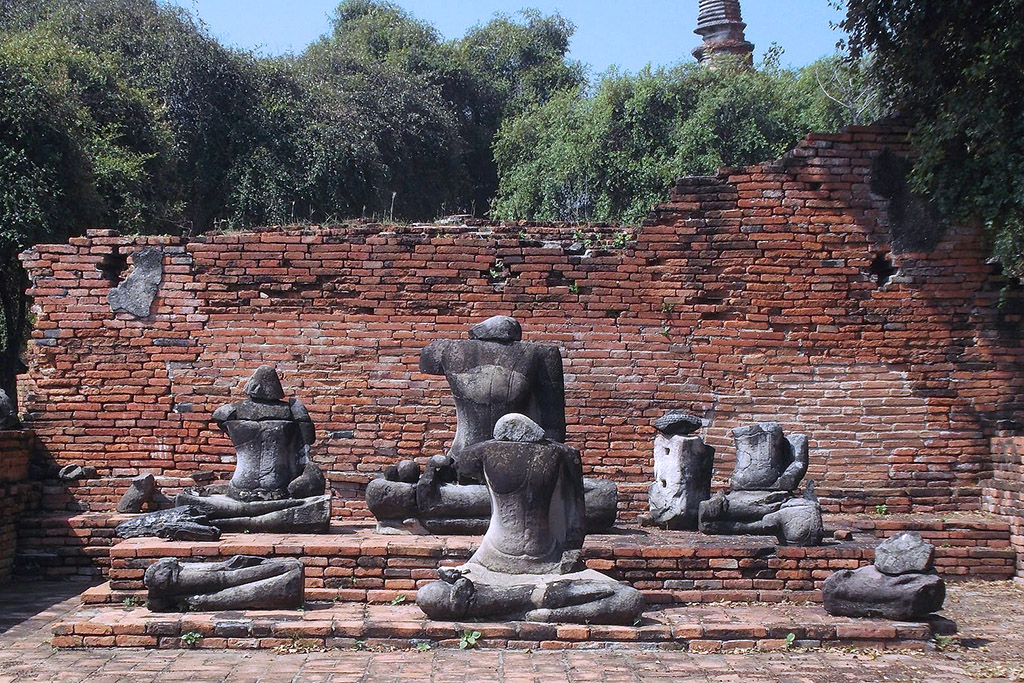
After a Siamese-Burmese war, Ayutthaya was destroyed and abandoned in 1767. Fortunately, we can admire the remains today at the Ayutthaya Historical Park. Obviously, this is the city’s most important attraction and has been on the list of UNESCO World Heritage Sites since 1991.
How to Visit
The main structures of the Historic part are in the city center of Ayutthaya, located on an island at the confluence of three rivers: Mae Nam Chao Phraya, Mae Nam Pa Sak, and Mae Nam Lop Buri.
Many visitors are coming in larger groups on day trips to Ayutthaya. Therefore, they are mostly visiting only the bigger ruins. Therefore, you can still have a tranquil, relaxed day.
You’ll probably spend the entire day walking – or even better cycling – from temple ruin to temple ruin. To get to some of the sites located on the outskirts, you might want to opt for a tuk-tuk ride. In the heat and most of all in the crazy traffic, cycling there is no fun.

Obviously, there is a lot of beauty to admire, hence, you can easily spend two or even three days in Ayutthaya. I did it in one, but it was really exhausting!
Below you find a comprehensive list of sites you shouldn’t miss They are all located within walking respectively cycling distance.
Either way, mind you, it can get quite hot. Therefore, put on some sun protection with high SPF. Also, don’t forget to put on lots of sun protection on the back of your hands. Apart from your face, this will be the part of your body that you’ll mostly expose to the sun. I did have a slight sunburn there in the evening. Also, wear a hat, and drink plenty of water throughout the day to stay hydrated.
Old City Island
Wang Luang
Wang Luang is the palace complex and was the residence of most of the Siamese Kings. It also goes by the name of the Old Palace to distinguish it from the Grand Palace in Bangkok.
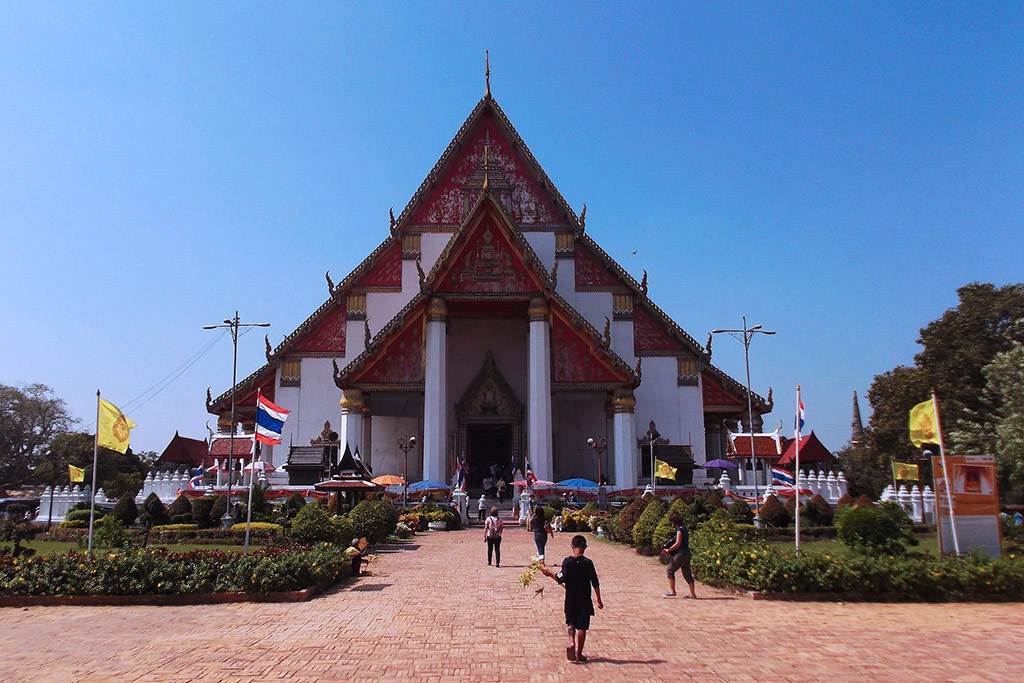
After King U Thong made Ayutthaya the capital of his new kingdom, he built his palace in the north of the island. Later, King Borommatrailokanat moved the palace north to the bank of the Lop Buri River to make way for the new temple Wat Phra Sri Sanphet. He divided the complex into an inner and an outer area.
Boromtrailokanat’s successor commissioned a throne hall where King Naresuan received the ruling prince of Chiang Mai. During the reign of King Prasat Thong, however, it burned down together with 110 other buildings after a lightning strike. Eventually, it was rebuilt and clad with gold plates. Hence, it also went by the name Golden Palace.
Wat Phra Si Sanphet
Until 1448, the king’s palace stood at this place. Eventually, King Borommatrailokanat had it moved a little further north so that in 1448, construction of a Wat according to the Wat Mahathat in Sukhothai began.
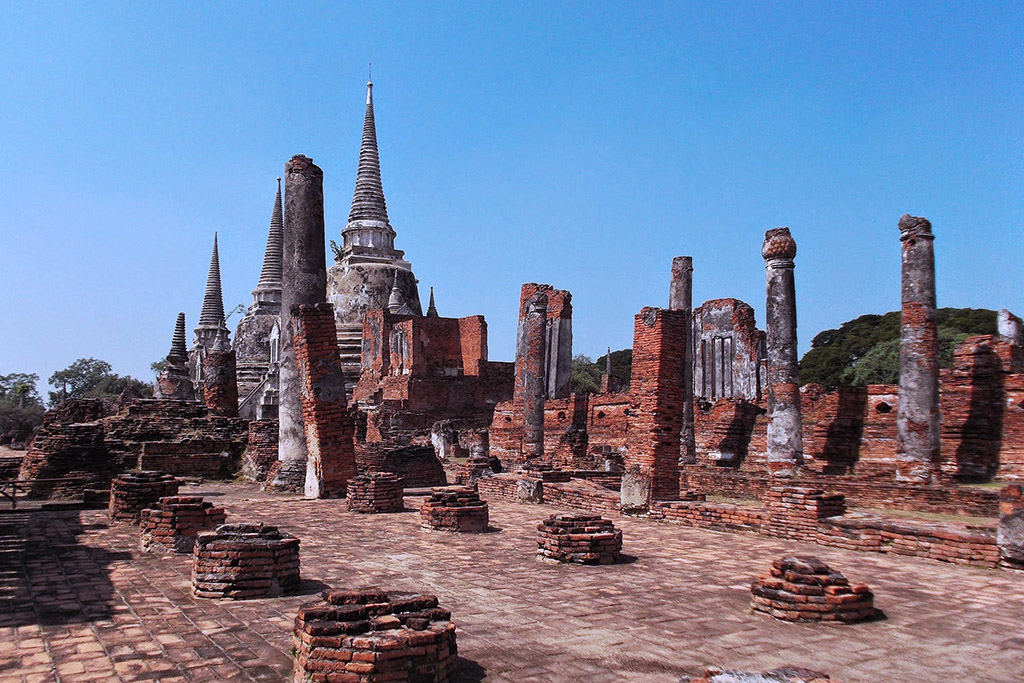
Wat Phra Si Sanphet was the imperial family’s temple and was used exclusively for royal ceremonies.
In 1492, Borommatrailokanat’s son King Ramathibodi II commissioned two Chedis for the ashes of his late father and his brother. Then, King Borommaracha IV added another Chedi in 1592.
In 1767, the Burmese conquered the capital Ayutthaya and began extensive destruction and looting. They set the temple on fire to melt the gold.
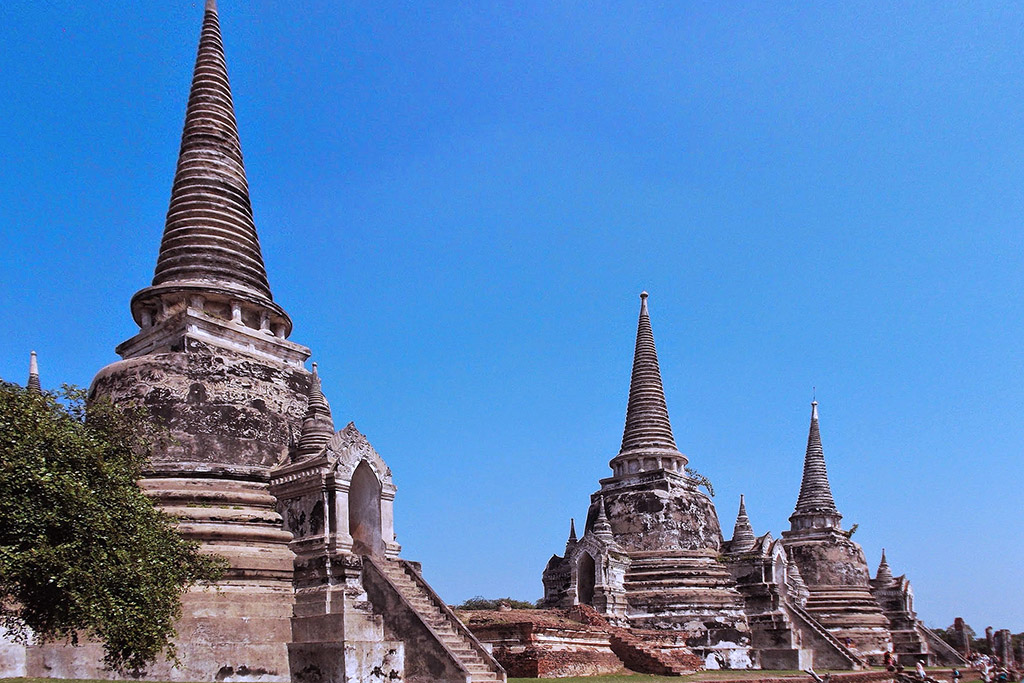
Nevertheless, the three destroyed Chedis could be restored in 1956. Today, they are the symbol of Ayutthaya.
Wat Phra Ram
The Royal Chronicles of Ayutthaya contradict each other when specifying the date of the foundation of this temple complex. Some attribute the year 1369, others claim it was in 1448 when King Boromtrailokanat took office.
Like all important temples in Ayutthaya, the temple faces east. The large prang stands on a square base. Steep stairs lead from all sides to the entrances. In addition to the main east entrance to the cella inside, there are three false entrances.
The main Prang’s shape compares to a corn cob. It is decorated with antefixes and garudas on several levels.
Wat Ratchaburana
Borommaracha II commissioned this temple complex during his reign. To this date, one of the crypts is still accessible.
Ratchaburana is on the edge of the center of the old town just opposite Mahathat Ayutthaya. They basically form a twin temple.
Wat Ratchaburana probably originates from 1424. It was built around the ashes of this King’s older brothers Chao Ai Phraya and Chao Yi Phraya. Those two had previously killed each other in an elephant duel for the throne.

The high prang of Wat Ratchaburana still has numerous decorations such as Nagas, Garudas, and other smaller figures in beautiful stucco work.
Wat Mahathat Ayutthaya
The story of Wat Mahathat begins around 1374 when King Borommaracha I commissioned a temple on this site.
His nephew and successor Ramesuan expanded the building into a large temple in 1384. Only then this temple got its current name.

The main structure of Wat Mahathat was originally the high, central Prang in the Khmer style. The temple withstood arson by the Burmese conquerors who captured and basically devastated Ayutthaya in 1767.
Today’s ruins date from restoration commissioned by King Prasat Thong in the late 17th to late 18th centuries. The Prang remained in good condition for a long time but collapsed in 1911 during the reign of King Vajiravudh.
Wat Lokayasutharam
A huge reclining Buddha statue is the main attraction of this temple. It is about 40 meters long and 8 meters high and made of bricks and mortar. The statue does not face east-west as usual, but north-south. Supported by the right hand, the head rests on four lotus buds.
Originally the statue was probably in a vihara, of which only the foundations of 24 octagonal columns can be seen.

Reclining Buddha statues often refer to a legend from the life of the Buddha. When the Buddha was once staying in an ashram in Sravasti, a giant asked for an audience with the Buddha. Since the giant was very proud of his size, he did not want to bow to the Buddha. Hence, Buddha showed himself many times larger than the giant. Ashamed, the giant paid the Buddha homage.
Wat Thammikarat
According to the legend, this temple dates from the era before Ayutthaya was the capital of Thailand. The Kings of the Ayutthaya Era kept it well-maintained until the imperium’s fall.
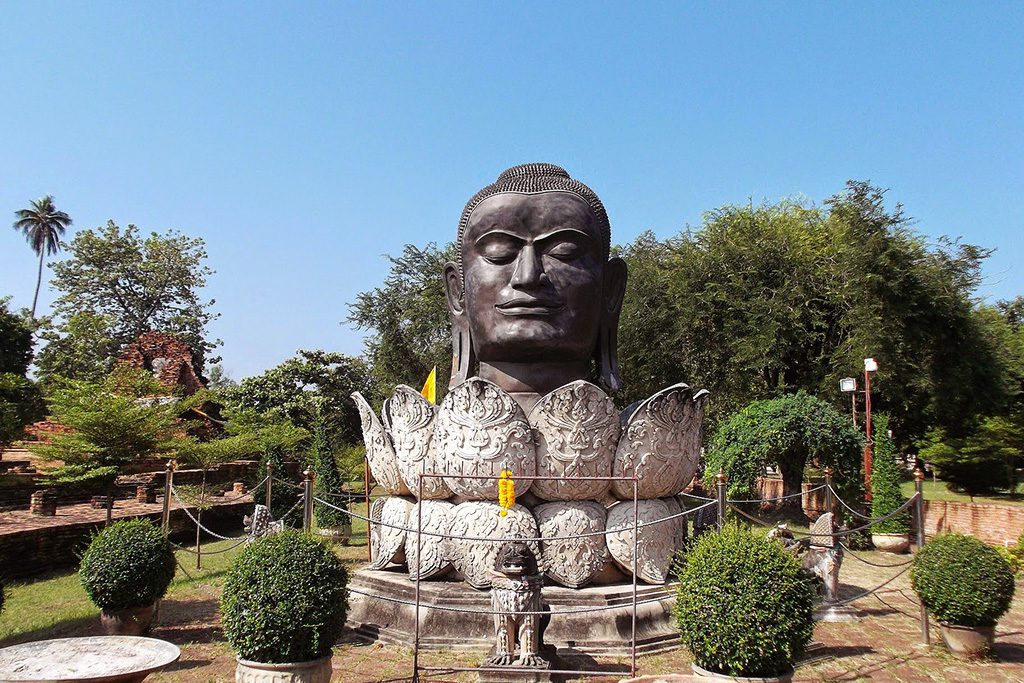
The most important antiquity from this temple is the Thammikarat Head. It is approximately two meters high. While the original is at the Chao Sam Phraya National Museum. Meanwhile, onsite the temple is a replica.
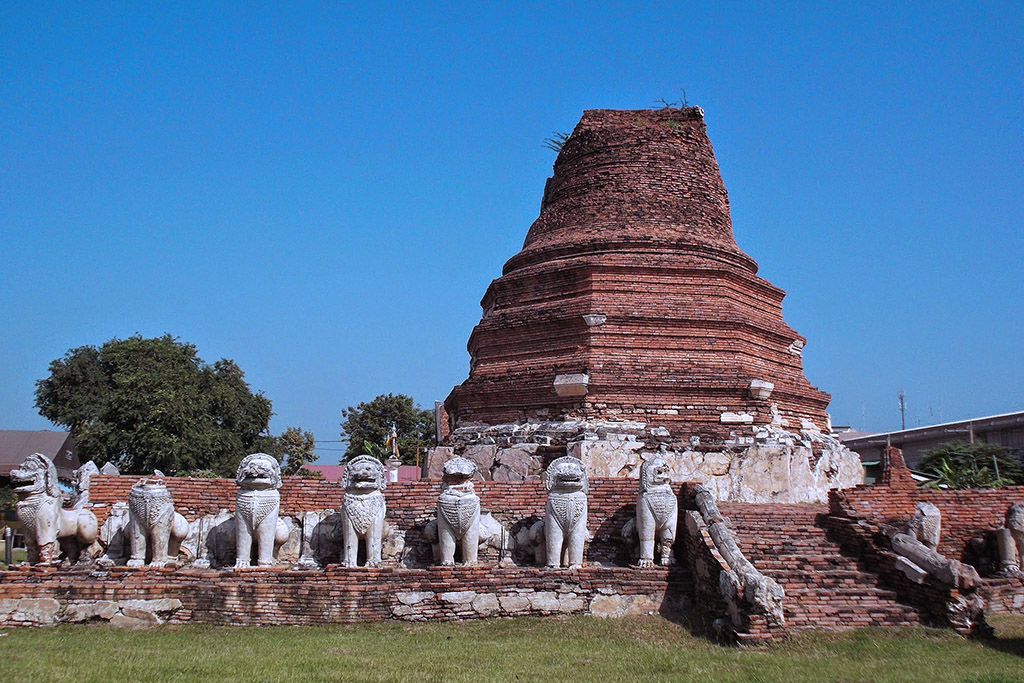
There are also ruins of ancient constructions, the ancient main hall of the temple, and a pagoda surrounded by lion statues. Also, there is a reclining Buddha image in the pantheon and a Luang Pho Khao Buddha Image in the main hall of the temple.
North of the Old City Island
Wat Phu Khao Thong
King Ramesuan, the son of the founder of Ayutthaya, King Ramathibodi I. commissioned this temple in 1387. In 1569, Burmese ruler Bayinnaung then ordered the 80-meter-high Chedi on the occasion of the Burmese capture of Ayutthaya.
King Naresuan the Great conquered Ayutthaya back in 1584. At that time, the building was not finished. However, he expanded the Chedi in the Thai architectural style.
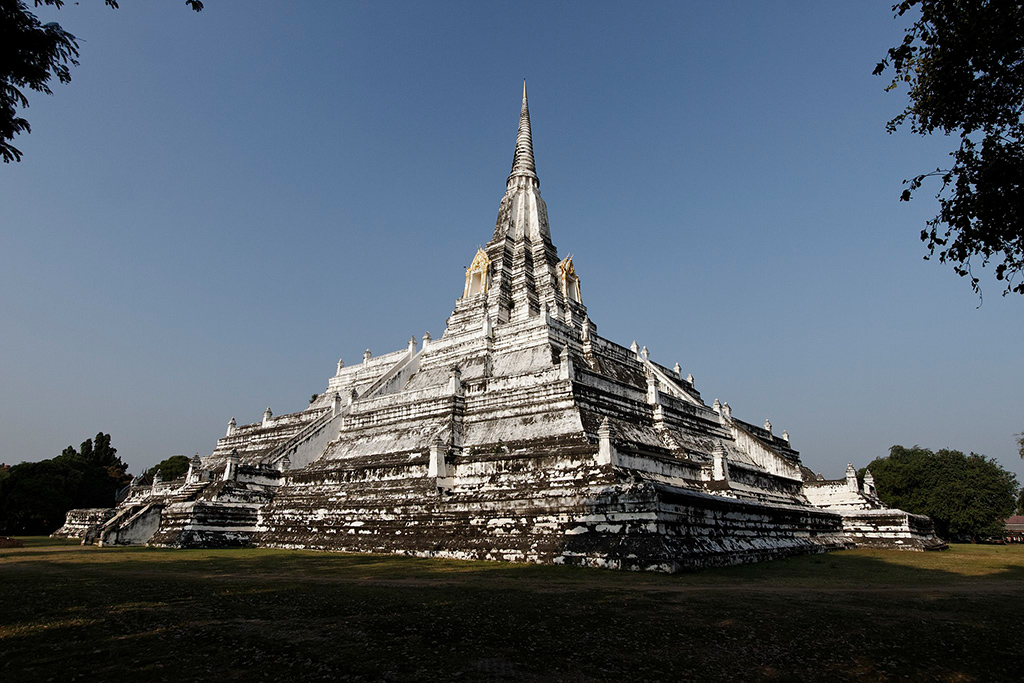
(Photo: Ddalbiez, Wat Phu Khao Thong-020, bearbeitet, CC BY 3.0)
From 1744 to 1745, King Boromakot ordered the restoration and some stylistic additions to the entire complex. Finally, the Burmese destroyed it almost completely during their second conquest of Ayutthaya in 1767.
Hence, today the structures show two different architectural styles. The Burmese Mon style prevails from the base to the balustrade. From there, the Thai style goes all the way to the top.
The Chedi is accessible. It grants a fantastic panoramic view of the surrounding area.
West of the Old City Island
Wat Lot Chong
This Wat is actually an active temple in Ayutthaya’s Ban Pom district.
On-site are an ordination hall, an open-sided vihara with a seating Buddha
statue, and other monastic structures. The ubosot, hence the ordination hall, shows the early Ayutthaya style although its construction dates from the late 19th century.

The ordination hall is surrounded by eight boundary stones, placed in the cardinal and inter-cardinal directions. These boundary stones are indicating former royal patronage.
Wat Lot Chong is named after a traditional Thai candy that locals used to produce in the temple’s vicinity.
Wat Chai Watthanaram
King Prasat Thong commissioned this complex in 1630 as the first temple of his reign on the site of his mother’s residence. It shows a central Prang in the Khmer style with four smaller prangs that stand together on a square platform.

Eight Chedis are connected to a square cloister and surround the central platform. The cloister had several side entrances and was originally roofed and open to the inside. Albeit, today, only the foundations of the columns and the surrounding wall remain. There were 120 seated Buddha statues along the wall.
The ground plan of Wat Chai Watthanaram reflects the Buddhist worldview written down in the 14th century in the Traiphum Phra Ruang, hence, the Three Worlds of King Ruang.
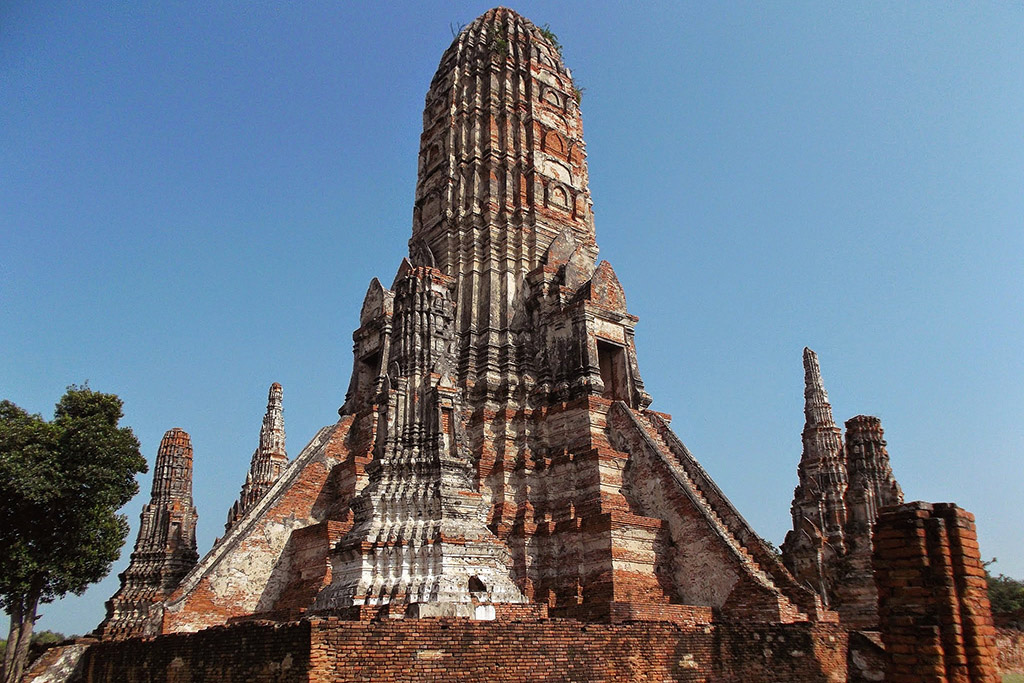
The large Prang Prathan in the middle symbolizes Mount Meru, representing the central axis of the traditional world. It is surrounded by the four continents swimming in the four cardinal directions.
South of the Old City Island
Wat Yai Chai Mongkon
King Ramathibodi I, the first ruler of the Ayutthaya Empire, commissioned this temple in 1357.
Ramathibodi I had the building built to provide a home for the monks who had returned from Ceylon, today’s Sri Lanka, after they had studied the Buddhist teachings with Phra Vanarat Maha Thera.
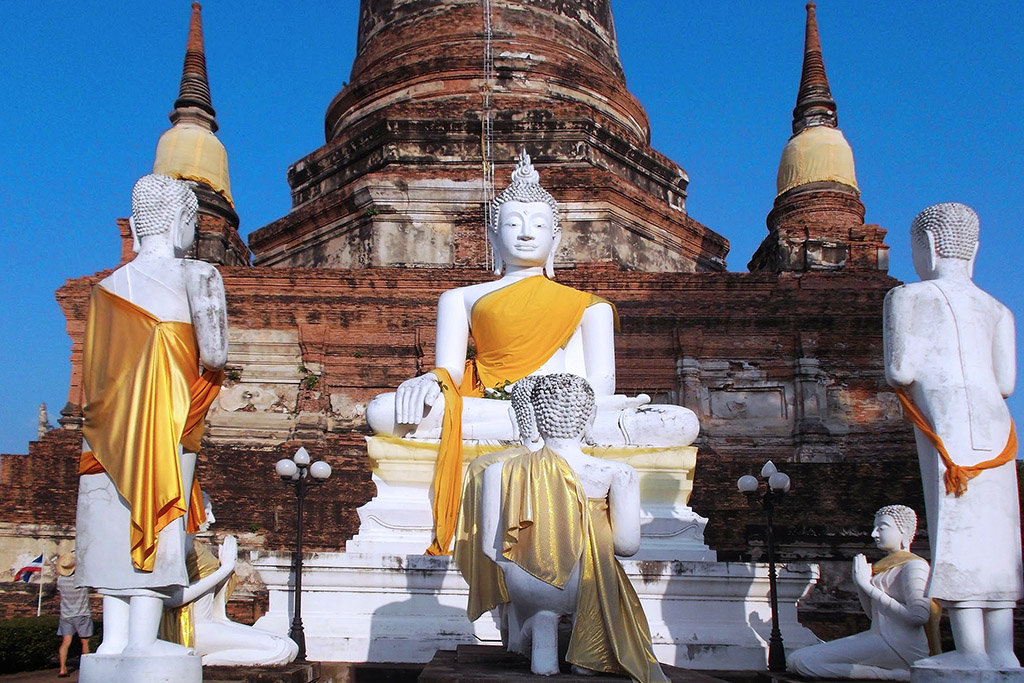
The chedi stands on a rectangular base with four smaller chedis at the four corners. On the east side, a long staircase leads to a small crypt. In front of it, symmetrical to the Chedi, lie the ruins of two Mondaps with seated Buddha statues.

Originally, an open gallery surrounded the Chedi. The supporting pillars are still partially preserved. Today, numerous Buddha statues from more modern times sit lined up along the wall.

There is also a large image of a reclining Buddha, which may date from the time of Naresuan the Great. It was mainly used for worship and meditation.
East of the Old City Island
Wat Maheyong
In 1438, King Borommarachathirat II commissioned Wat Maheyong. Later, King Thai Sa restored it in 1711.
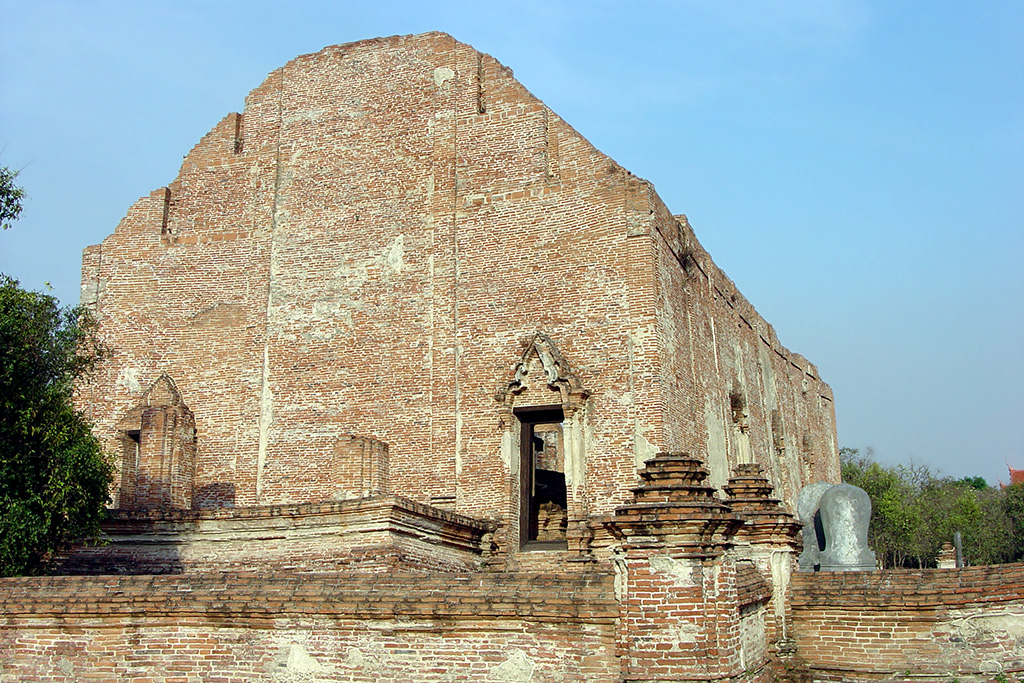
(Photo: Michael Gunther, Wat Maheyong, Ayutthaya 0320, cropped 3:2, CC BY-SA 4.0)
The major structures of this complex are its Chedi and an ordination hall.
80 sculpted elephants support the chedi’s platform.
LOPBURI
Lopburi is actually one of the oldest cities in Thailand. It was founded in 468 by Indian colonists under Kalavarnadis from what is now Pakistan.
From the 10th century, Lopburi came under the influence of the Khmer Empire of Angkor, today Cambodia. It became one of the most important provincial centers in the western part of its dominion.
The most important monuments from the Khmer period are the Wat Phra Sri Rattana Mahathat and Prang Sam Yot, the city’s symbol. Both date from around 1200, hence, the reign of Jayavarman VII of Angkor. Today, the fashion of the Khmer buildings and works of art in Thailand is also known as the Lopburi style.
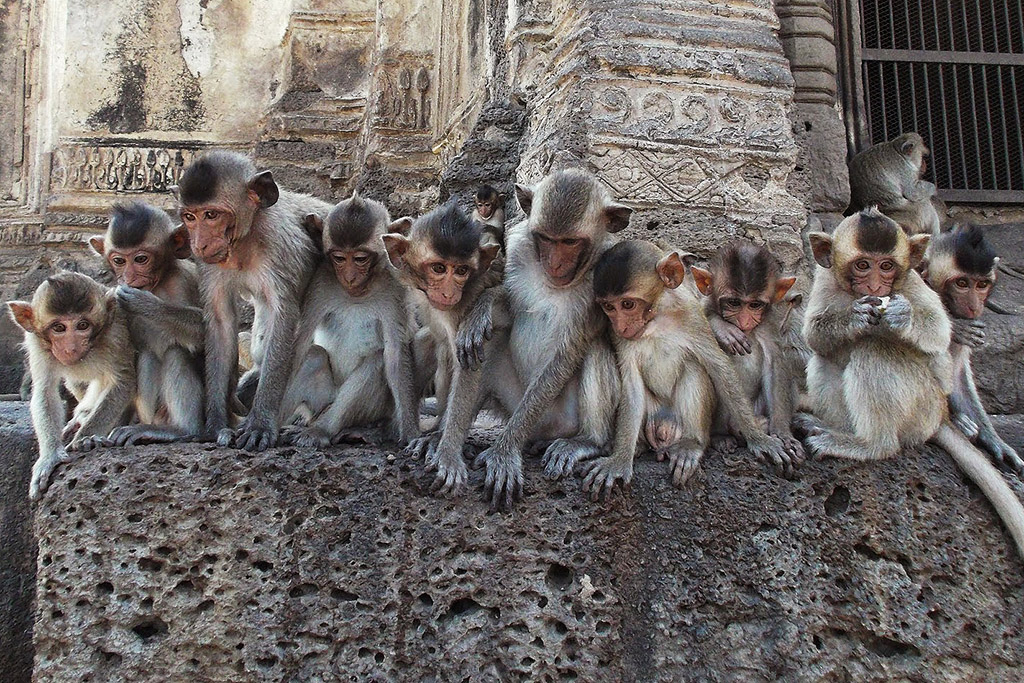
After Ayutthaya was founded, Lopburi first functioned as a kind of Second Capital. However, with Ayutthaya’s growth, Lopburi’s importance waned. After the kingdom of Sukhothai fell to Ayutthaya in the personal union in 1438, Phitsanulok, hundreds of kilometers further north, became the Second Capital.
Phra Narai Ratcha Niwet
King Narai built this Palace in Lopburi between 1665 and 1677. The design comes from French Jesuits who had settled in the capital Ayutthaya since 1662.
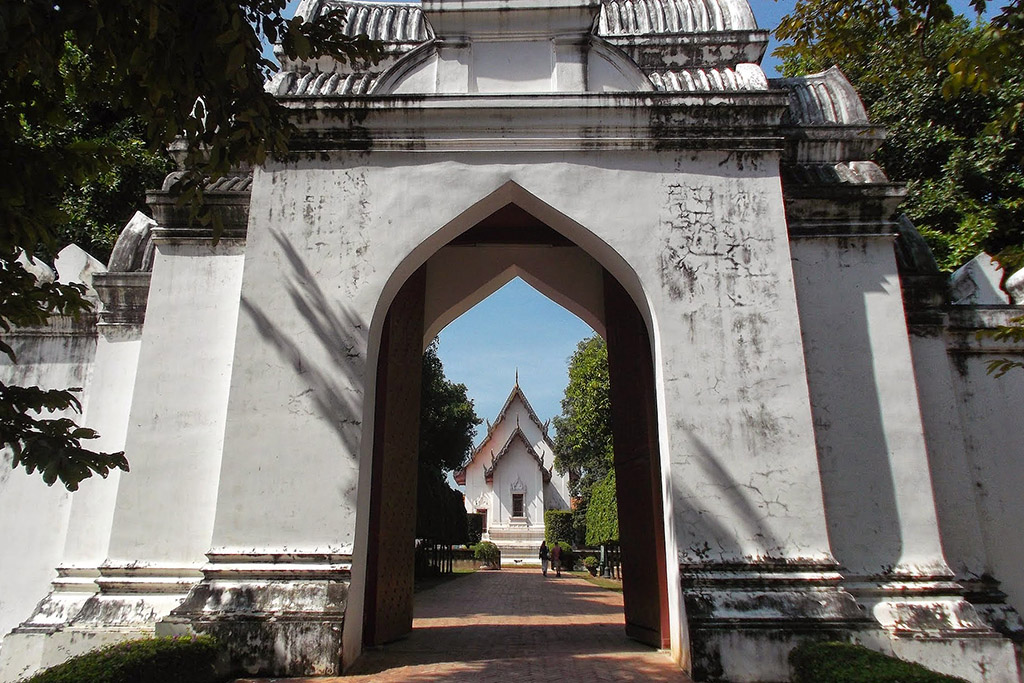
Prince Damrong Rajanubhab and Prince Narisara Nuwattiwong opened the Chantarapisarn Pavilion as the Lopburi Museum in 1924. Today, it houses a large collection of historical and antique art objects in several buildings.
Prang Sam Yot And San Phra Kan
San Phra Kan is a Brahmin shrine standing across from Prang Sam Yot. Built only in 1951, it houses a highly venerated four-armed statue. This Lop-Buri-style figure was originally headless, representing the Hindu god Vishnu. A sandstone head of Buddha in the style of the late Ayutthaya period was added only later.

Behind the shrine are the remains of a Khmer Prang. This ancient Khmer Prang consists of a mound of large, stacked laterite blocks. On the hill are the remains of a square shrine with a porch on all four sides. It dates back to the 11th century.
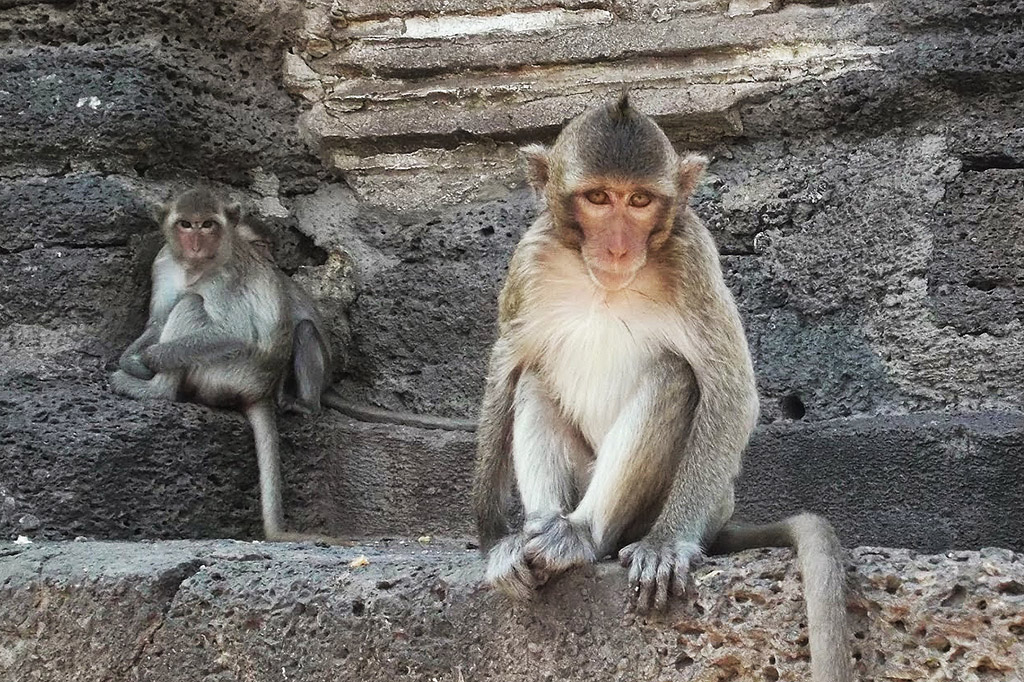
Today, it functions as a monkey sanctuary.
Monkey Business
Most of these drolly creatures hang around Wat San Phra Kan. There are actually masses of them. Seeing so many of them with their gray fur and long tails, they deem to be rats.
Somehow it’s cute and creepy at the same time.
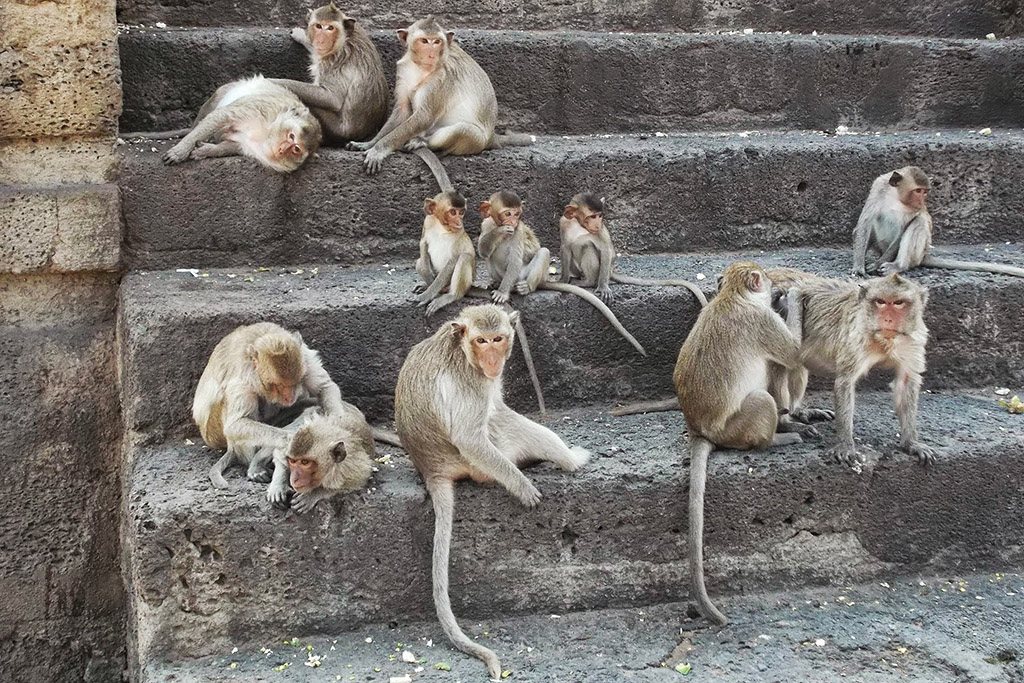
As a matter of fact, the monkeys roam everywhere around Lopburi, and they quickly show you who runs the show.

In the middle of the street, all of a sudden one of them jumped on my belly and grabbed me around the waist. If you think that’s cute, let me assure you, it’s not. Since I screamed and waved my arms like a mad woman, he let go. But seriously, these creatures are far from being curious George.
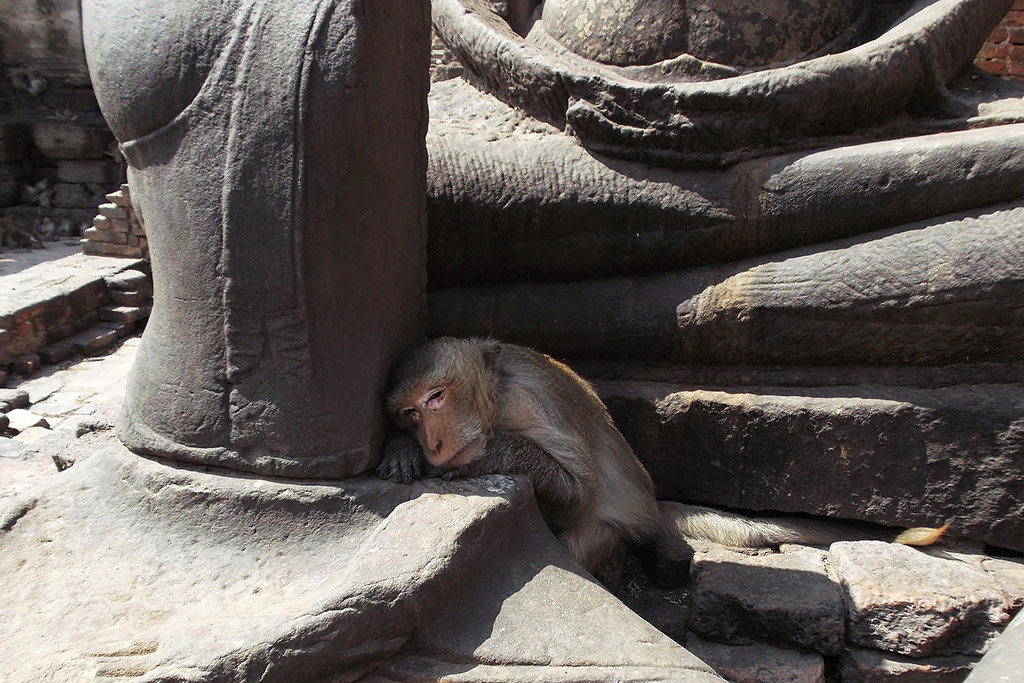
A girl I met on Ko Phi Phi told me that one of them bit her thigh. Fortunately, it didn’t break the skin.
So look at them, but keep your distance. And get rabies vaccination before traveling – I’m serious.
Maps
Here are maps of Ayutthaya and Lopburi that will certainly help you find all those mesmerizing places I’m introducing above:
Practical Information
How to Get There
Ayutthaya has a station on the railway line coming from Bangkok, which serves the traffic of the Northern Railway and the Northeast Railway of the Thai State Railway with the final destinations Chiang Mai, Nong Khai, and Ubon Ratchathani.
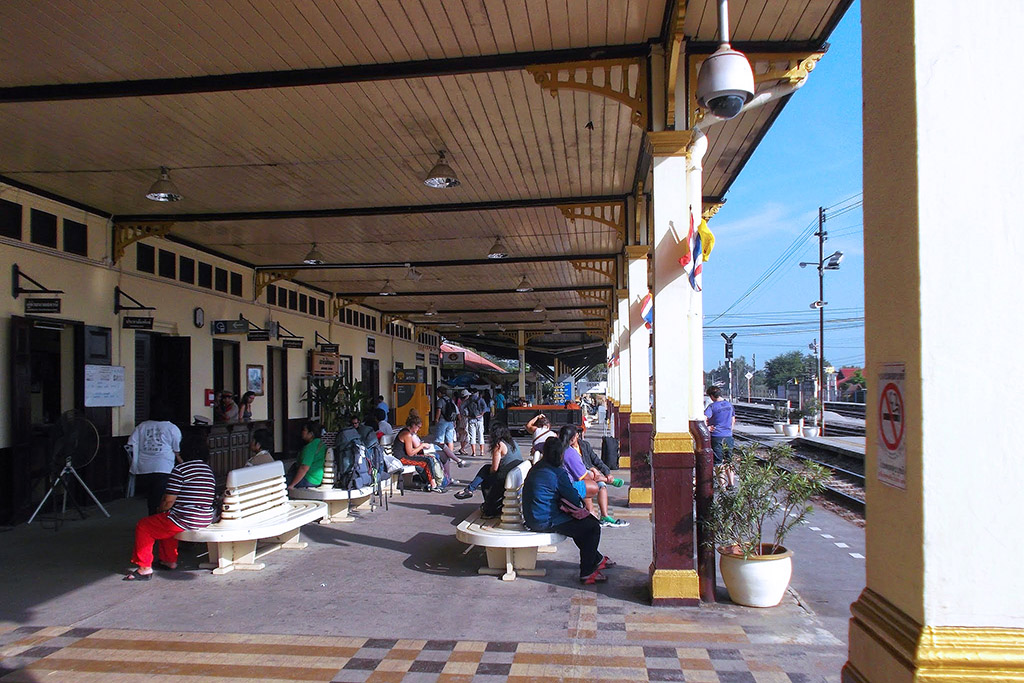
Therefore, getting from Bangkok to Ayutthaya is easy-peasy. There are public buses as well as private minivans going there, nevertheless, I took the train. It was an…experience; mainly because trains in Thailand are less reliable than buses, so that we had to wait for more than one hour – for a ride of about 60 minutes.
How to Get Around
The long-distance bus station, as well as the train station, are on the opposite bank of river Pasak east of the city island.
Tuk-tuks are awaiting passengers.
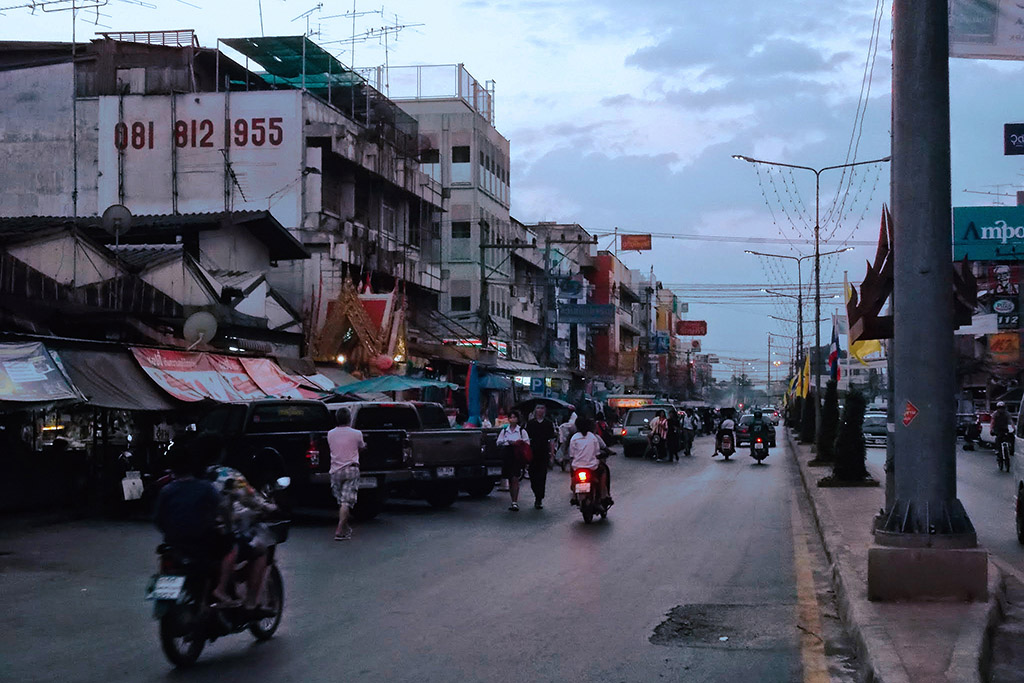
Tuk-tuks can also take you to all the sites I’m listing in this post. I personally find that your best option for moving around is by bicycle.
Normally, you can borrow a bike at your hotel for free or sometimes for a very small fee. Nevertheless, if your hotel does not supply you with a bike, you can rent one downtown.
If you are cycling from temple to temple, beware that it might get quite hot. Therefore, put on some good sun protection, wear a hat, and drink plenty of water throughout the day. Also, include as many breaks as you need.
From Ayutthaya to Lopburi
As a matter of fact, most people visit Lopburi exclusively for the monkeys and mostly on a day trip. What can I say, most people are right. I know that because I did stay the night – and would not do it again.
Anyway, arriving at Lopburi, I left my big luggage at the train station and took only a knapsack with me.
As I said, I did stay the night. Not only did I stay the night, but I also booked myself into the less charming, most remote hotel ever. This was so me!
The hotel is located about 4 miles out of town which was nice insofar, as I had to take two different buses that look quite different from those I know from home. They were basically wooden crates with tiny plastic chairs designed for kids. Truly unique. Actually, this kind of quirky encounter is one of the reasons I love to travel.
Anyway, those wooden crates took me to some industrial-commercial outskirts where there were only big car dealers and hardware megastores. Fortunately, there was also a big supermarket where I stocked up on some snacks’n’drinks. Hence, I finally visited the real Thailand. The part no visitor travels for.
As I said: sooo me!
Where to Stay
So, where should you stay?
Well, as a matter of fact, I would simply stay in Ayutthaya and go to Lopburi on a day trip.
In Ayutthaya, I stayed at the small resort Q Zone Boutique House* just north of the historic town. I had a bedroom, obviously, but also a nice sitting area and even a small porch.
They supplied me with a bicycle so that it took me only a couple of minutes to get to the Historic Park.
But if you want to check out other lodging options, you can do so on this map*:
Booking.comWhat to Eat
When in Thailand do as…well, I think you should eat at night markets as often as you can. For the delicious food, but also for the unique atmosphere.
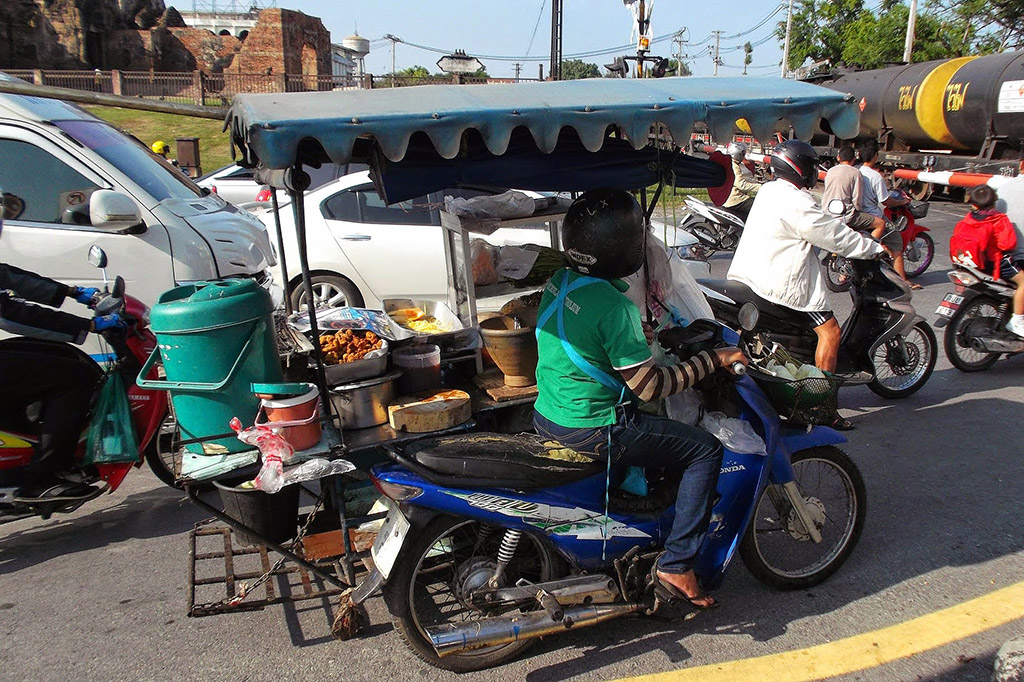
There is one thing that I strongly disliked in Thailand: The coffee. Most of the time, they served me Nescafé. Not the George Clooney-stylish-coffeemaker-stuff but this horrible instant brew. Since they serve this bitter dishwater with such a lovely smile, I suffered in silence.
Then I came to Lopburi and right in front of the Narai Raja Niwet Palace is a really good coffee shop by the name of Nom-Cup-D. The guy doesn’t speak one word of English, but no matter what he serves you, you’ll be satisfied.
Wat What to See
I’m an avid solo-travelling woman. Since solo travel doesn’t equal solitude, I love to join organized tours here and there. They allow me to meet fellow travellers – for just a short moment or a lifelong friendship.
Therefore, here are some great ideas of what to do when visiting Ayutthaya. Pre-booking online will guarantee your place at the activity of your choice*:
Cash And Cards
Ayutthaya is a quite touristy place although many visitors come only on a day trip from Bangkok. However, credit cards are widely accepted. Obviously, there are Banks with ATMs – principally along the Uthong road.
Beware that not every ATM works with every international card. Don’t freak out – as I did – simply try a teller from a different bank.
As of November 2022, one US-Dollar equals 38 Baht (THB), but you can check the current rate on this page.
Language
Since Ayutthaya is such an important historic spot, I thought everyone there would speak English fluently. But apart from some glorious exceptions, most people have only a rudimentary command of the language. At some convenience stores, they didn’t even understand that I was asking for tea.
In Lopburi, even fewer people spoke English.
This being said, obviously, it’s a nice gesture to say at least the greeting Sawasdee Kha and Sawasdee Khun as well as Khop Khun Kha respectively Khop Khun Khap. Kha is a suffix used by women, men are using Khap.
Communication and Connection
There is an internet connection practically everywhere.
Nevertheless, if you want to be sure, I recommend you check the Wi-Fi quality of your hotel beforehand. You’ll find the link in my post World’s Most Complete Travel Information which is an indispensable globetrotter-classic, anyway.
Ayutthaya and Lopburi were only two of the destinations I visited during my exciting trip to Thailand. So go to the main post to check out all the other places. There you’ll also find valuable general information that will make your trip smoother.
Pinnable Pictures
If you choose to pin this post for later, please use one of these pictures:
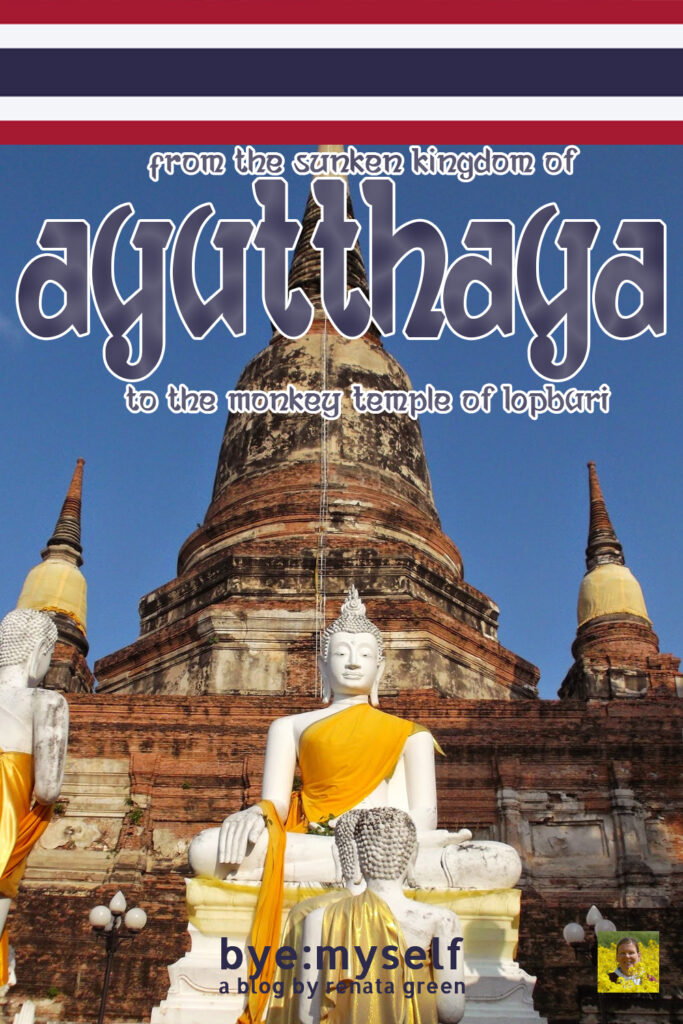
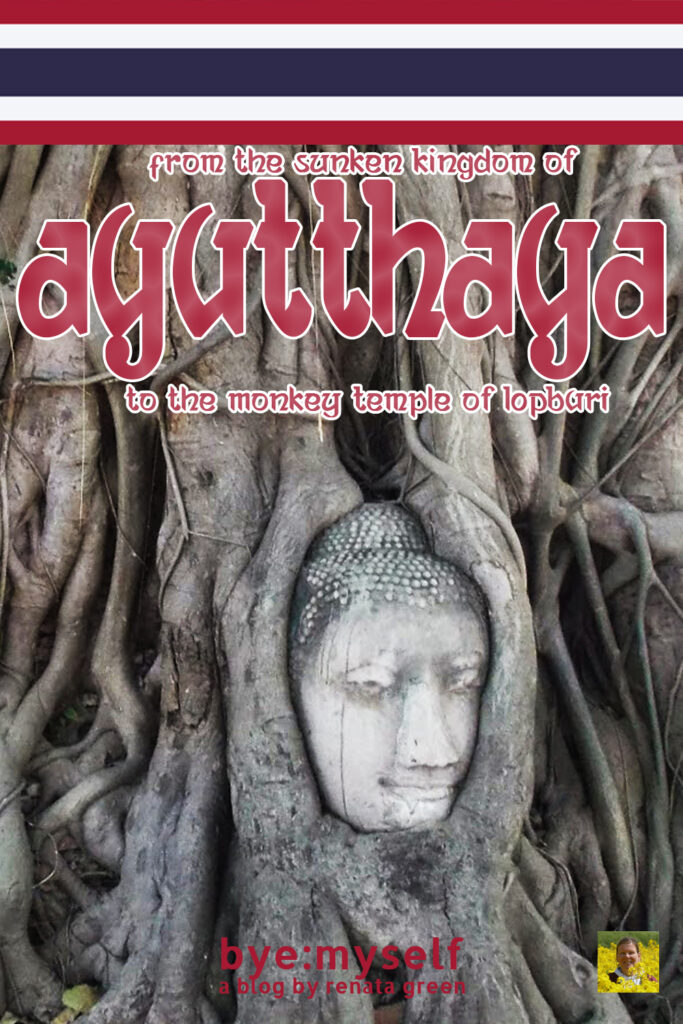
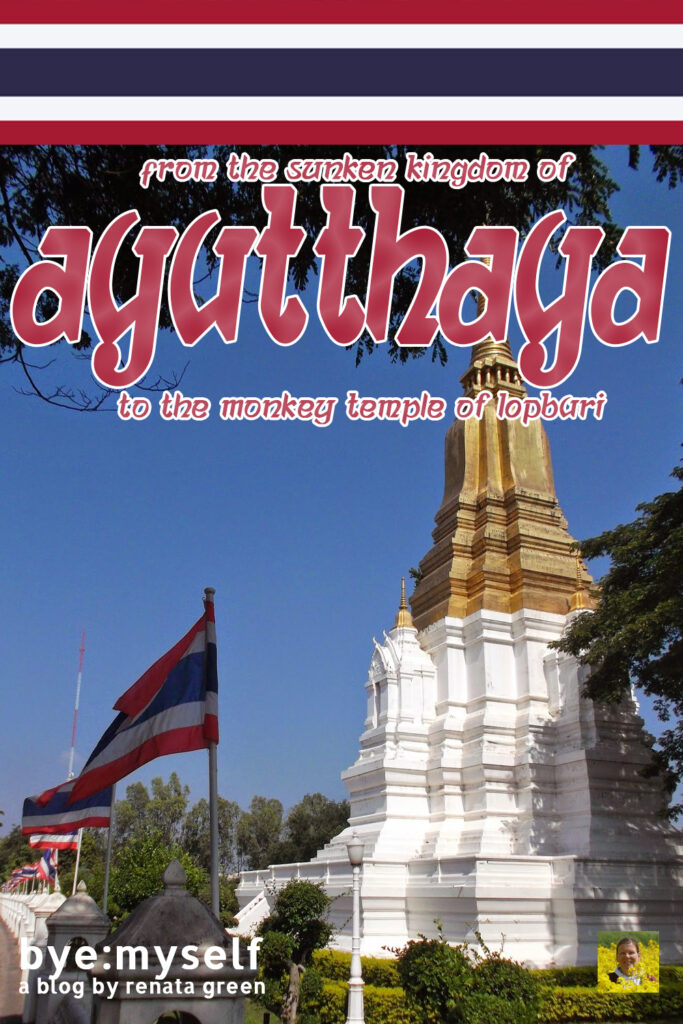

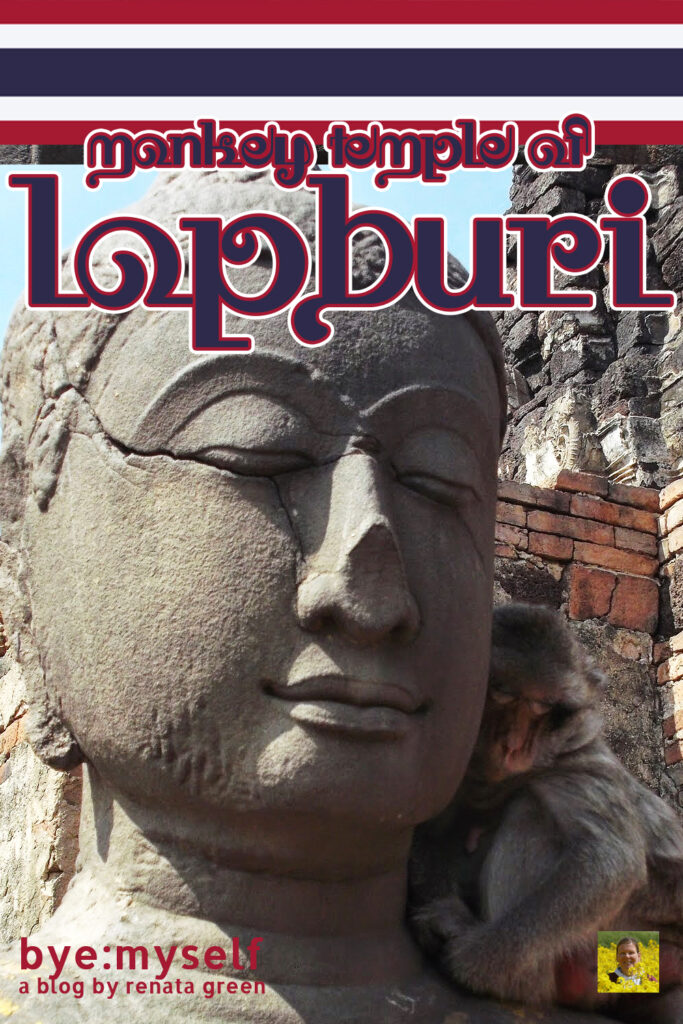

Note: I’m regularly completing, editing, and updating this post – last in November 2022.
Did You Enjoy This Post? Then You Might Like Also These:
CHIANG MAI – Ten out of 200 Temples
Island Hopping in the Andaman Sea – Koh Phi Phi, Koh Lanta, Koh Jum
24 hours in BANGKOK
From the Sunken Kingdom of AYUTTHAYA to the Monkey Temple of LOPBURI
THAILAND – all the must-see places
KRABI and AO NANG – the Gateway to Paradise
SUKHOTHAI – 200 temples at your choice
KAMPHAENG PHET and PHITSANULOK – two (un)necessary detours
* This is an affiliate link. If you book through this page, not only do you get the best deal. I also get a small commission that helps me run this blog. Thank you so much for supporting me!
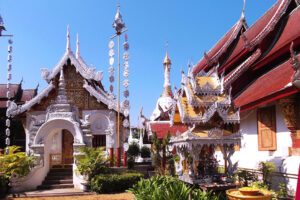
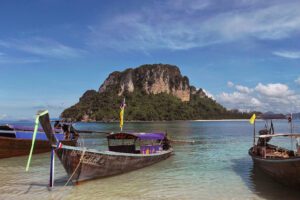
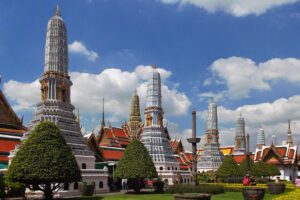
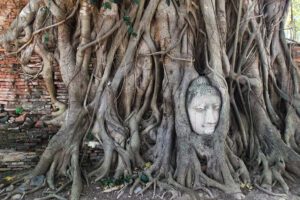
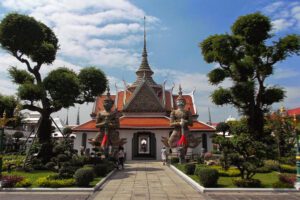
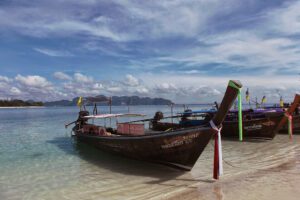
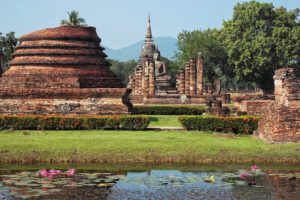
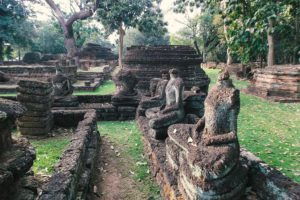
You are so right. I spent an afternoon in Ayutthaya and I wished I had had more time to really sit and take it all in. I was inspired by the history– to much to explore in a couple of hours. I hope to go back one day on my own.
Even an entire day was too little. I’m looking forward to going back to Thailand to see all I’ve missed the last time 😉